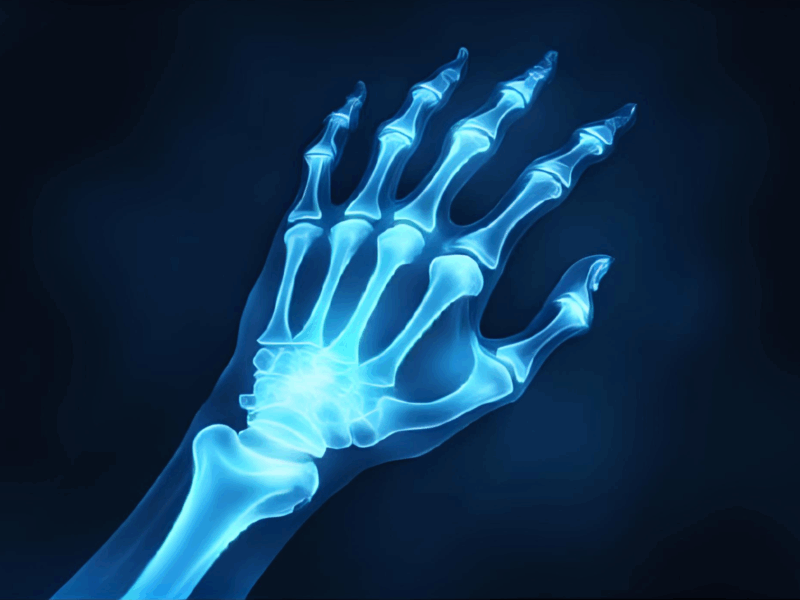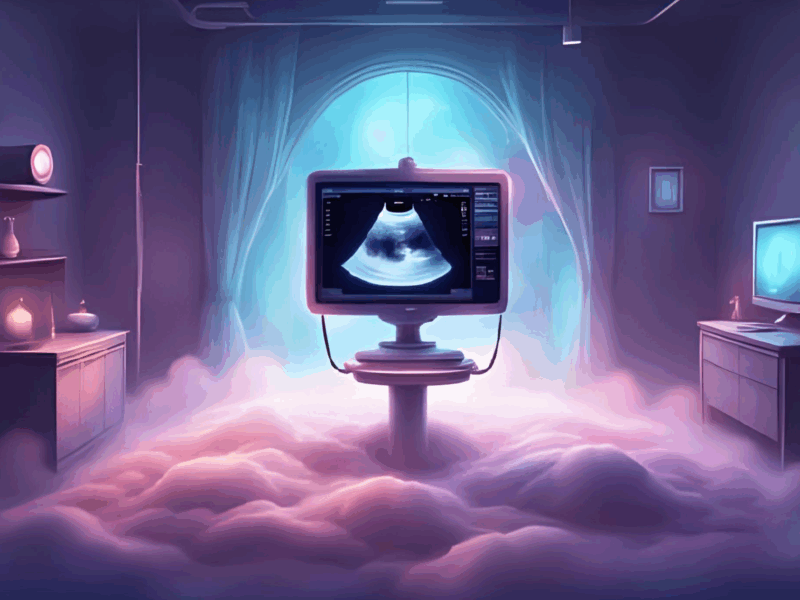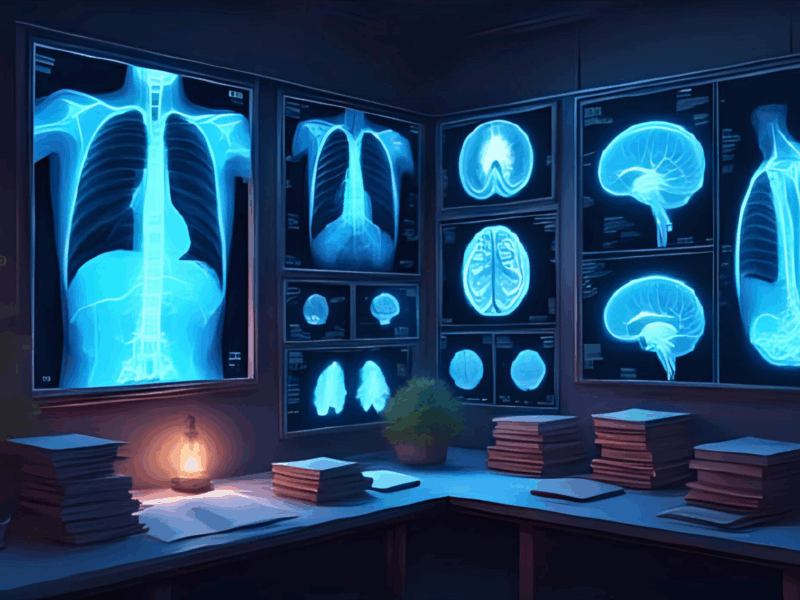Dr. Esad Feyzi: A Pioneer of Turkish Radiology
As a radiologist in Türkiye, the story of Dr. Esad Feyzi Bey profoundly influences me. His life’s work, which brought the revolutionary power of X-rays to the Ottoman Empire, reminds me of the immense impact curiosity, determination, and innovation can have in medicine. Inspired by the book authored by Prof. Dr. Aytekin Besim, Prof. Dr. C. Çınar Başekim, and the History and Ethics Research Group of the Turkish Radiology Association, I’ve taken detailed notes on his journey.
This post is not just a tribute but a reminder I will revisit often to stay connected to the roots of Radiology in Türkiye.
The Birth of X-Rays and Their Arrival in the Ottoman Empire
In 1895, Wilhelm Conrad Röntgen’s discovery of X-rays heralded a new era in medical diagnostics. The invisible rays that could penetrate objects and reveal internal structures were a sensation worldwide. This discovery quickly captured the attention of Esad Feyzi Bey, a young and ambitious medical student in Istanbul.
Esad Feyzi first learned about X-rays from a French medical journal that detailed Röntgen’s experiments. Fascinated, he proposed replicating the experiments in the Military Medical School (Mekteb-i Tıbbiye-i Askeriye-i Şahane), where he studied. The resources were scarce, but his creativity was boundless. Using equipment available in the school’s physics lab, such as a Crookes tube, a Ruhmkorff coil, and an improvised electrical circuit powered by batteries, Esad Feyzi built a rudimentary X-ray machine.
In early 1896, Esad Feyzi successfully captured an X-ray image of a human hand, making Türkiye one of the first countries to adopt this groundbreaking technology. What stands out about this achievement is its proximity to Röntgen’s discovery—just a few months later—demonstrating Esad Feyzi’s exceptional ability to adapt global scientific advancements to local settings.
Turning Experiments into Medical Practice
While many viewed X-rays as a scientific curiosity, Esad Feyzi immediately recognized their potential for medical applications. His vision was transformative: he wanted to move X-rays from the laboratory into hospitals to improve patient care.
This vision became a reality during the Ottoman-Greek War of 1897. Wounded soldiers were arriving in Istanbul with injuries that required precise surgical intervention. Together with his colleague Dr. Rıfat Osman, Esad Feyzi proposed using X-rays to locate shrapnel and bullet fragments in soldiers’ bodies.
The proposal was presented to Dr. Cemil Topuzlu, a prominent surgeon overseeing military medical care. Recognizing the potential of this innovation, Dr. Topuzlu approved the transfer of Esad Feyzi’s X-ray machine from the Military Medical School to Yıldız Military Hospital.
The device itself was a testament to ingenuity. The Crookes tube was suspended on a tripod made of wood, with a photographic plate placed beneath the injured limb. One of the first patients was a soldier named Mehmet Efendi, whose wrist was injured by shrapnel. The resulting radiograph revealed the precise location of the fragment, allowing surgeons to remove it with minimal damage to surrounding tissues.
This success was revolutionary. It marked the first use of X-rays in Türkiye for medical purposes and one of the earliest applications of X-rays in military medicine globally. Esad Feyzi’s work set a precedent, demonstrating the practical utility of X-rays in surgery and beyond.
Institutionalizing Radiology: From Education to Research
Esad Feyzi wasn’t content with isolated successes. He saw the need to institutionalize radiology as a discipline within Ottoman medicine. He championed the inclusion of X-ray science in the official curriculum of the Military Medical School, ensuring that future generations of doctors would be equipped to use this technology.
In 1898, Esad Feyzi authored Röntgen Şu’a’atı ve Tatbikat-ı Tıbbiye ve Cerrahiyesi (X-rays and Their Medical and Surgical Applications), one of the earliest radiology textbooks in the world. The book provided detailed explanations of the principles of X-rays, instructions on building and using X-ray machines, and their potential applications in medical diagnostics and surgery.
Moreover, he established the first radiology department in Türkiye within the Military Medical School. This department laid the foundation for the development of radiology as a recognized medical specialty in the country.
Challenges and Triumphs: Wartime Applications of X-Rays
The wartime application of X-rays showcased their transformative potential in medicine. Esad Feyzi’s machine was used extensively during the Ottoman-Greek War, providing radiographic images of fractures, embedded bullets, and shrapnel.

One particularly striking example is the radiograph taken of a soldier’s hand, which clearly showed the position of a metal fragment. This allowed surgeons to operate with precision, minimizing the risks associated with exploratory surgery. The success of these procedures caught the attention of international observers, including the German Red Cross, whose representatives praised Esad Feyzi’s work as a milestone in military medicine.
These wartime achievements not only saved lives but also underscored the importance of radiology in emergency and trauma care. They solidified Esad Feyzi’s reputation as a pioneer in the field.
A Life Cut Tragically Short
Despite his remarkable achievements, Esad Feyzi’s life was heartbreakingly brief. In 1901, at the age of 28, he succumbed to meningitis caused by a facial erysipelas infection. At the time of his death, he was still actively involved in research and teaching, with plans to further expand the role of radiology in medical practice.

Esad Feyzi’s passing was a profound loss for Turkish medicine. His colleagues, mentors, and students mourned the loss of a brilliant mind taken far too soon. His grave in Karacaahmet Cemetery, restored years later by his family, bears the inscription: “The First Turkish Radiologist Captain Doctor Esad Feyzi Lies Here 1874–1901.”
Why This Story Matters to Me
Dr. Esad Feyzi’s story isn’t just a chapter in the history of Turkish radiology—it’s a source of inspiration for radiologists like me. His ingenuity in building the first X-ray machine in Türkiye, his vision for integrating radiology into medical practice, and his contributions to education and research remind me of the transformative power of innovation.
Every time I read about his life, I feel motivated to approach my own work with the same sense of purpose and creativity. This post is a personal tribute to Esad Feyzi’s legacy, one that I will revisit regularly to stay inspired and connected to the roots of our profession.
Let his story remind us all that even with limited resources, determination and a passion for discovery can lead to extraordinary achievements.






